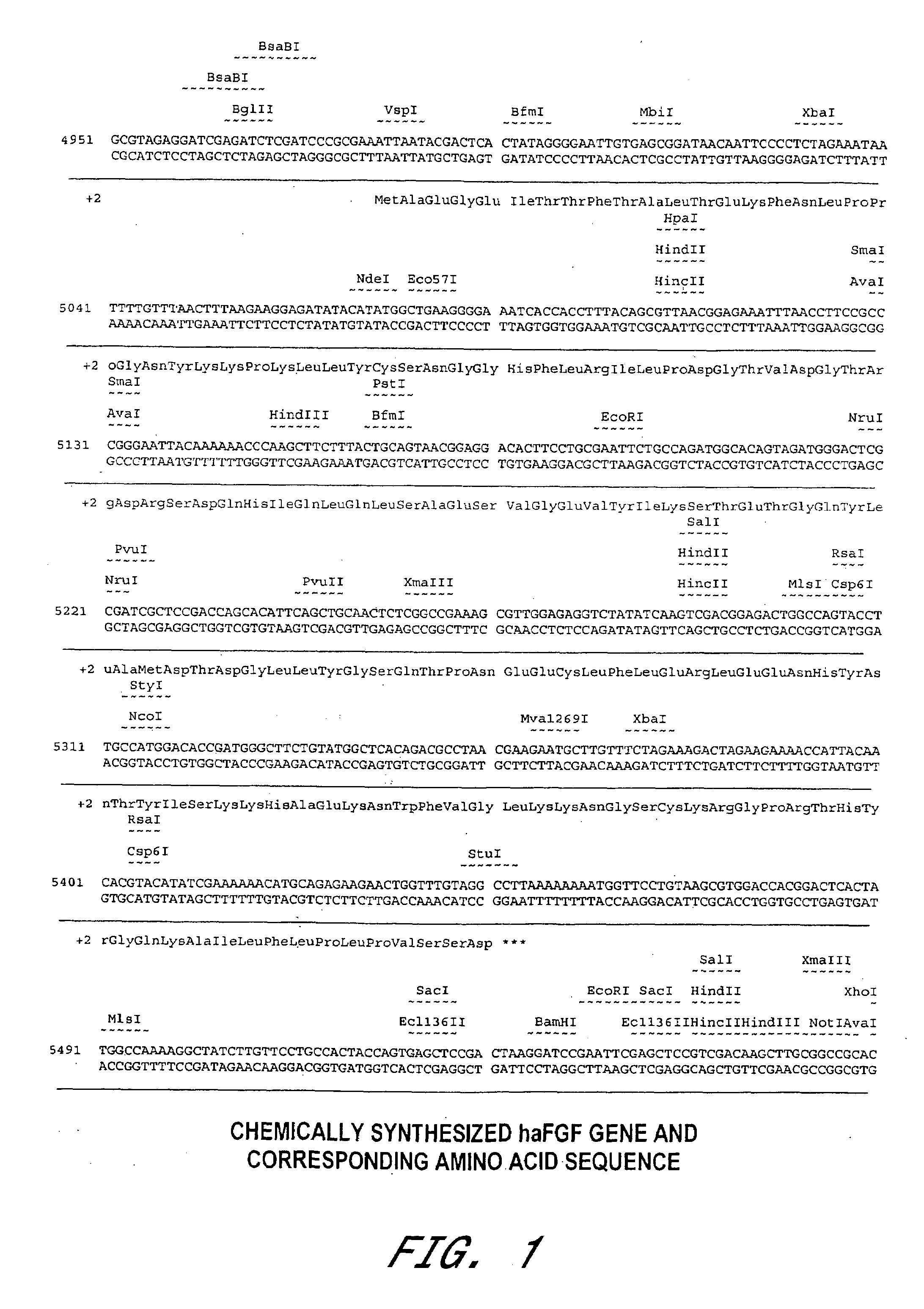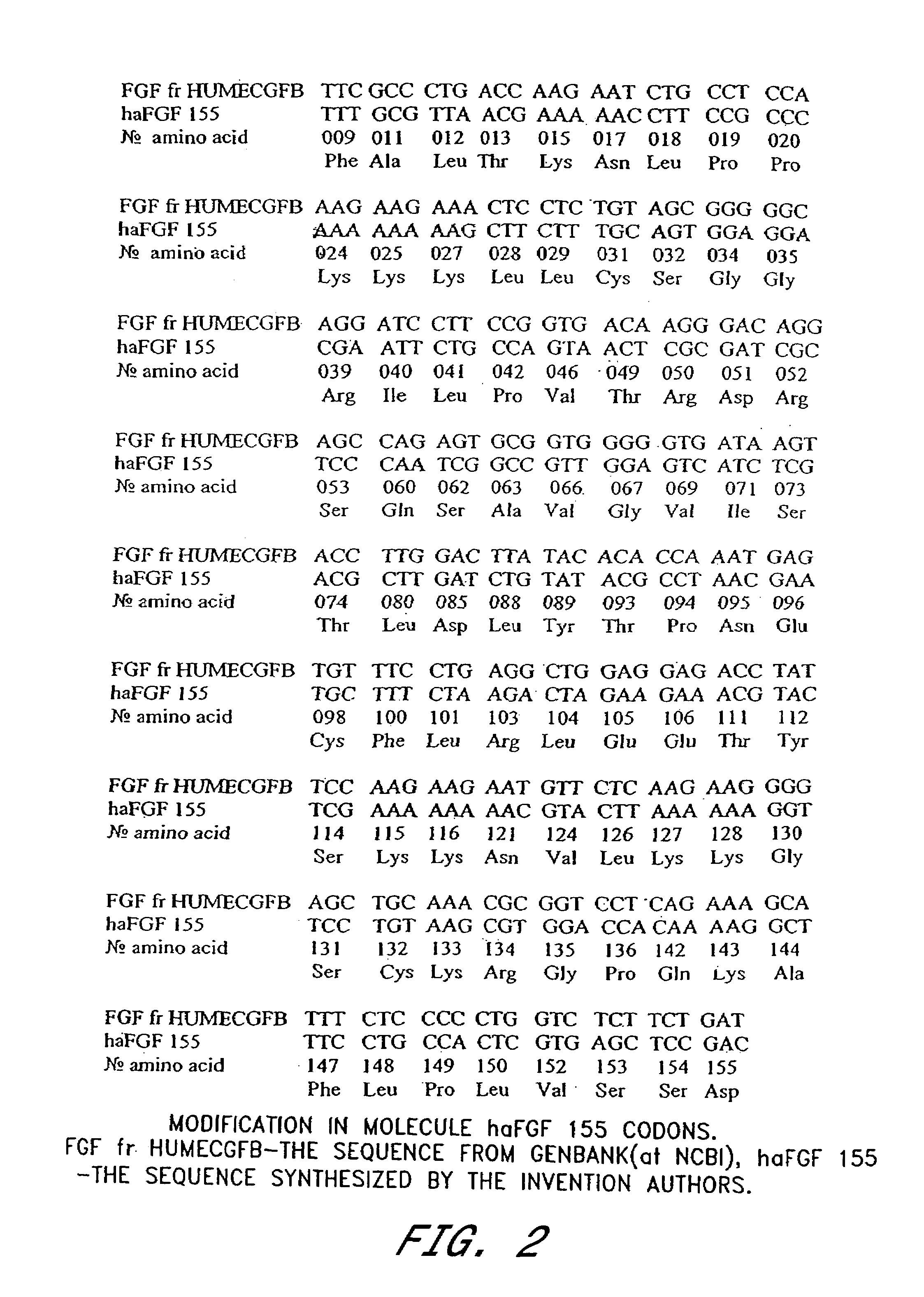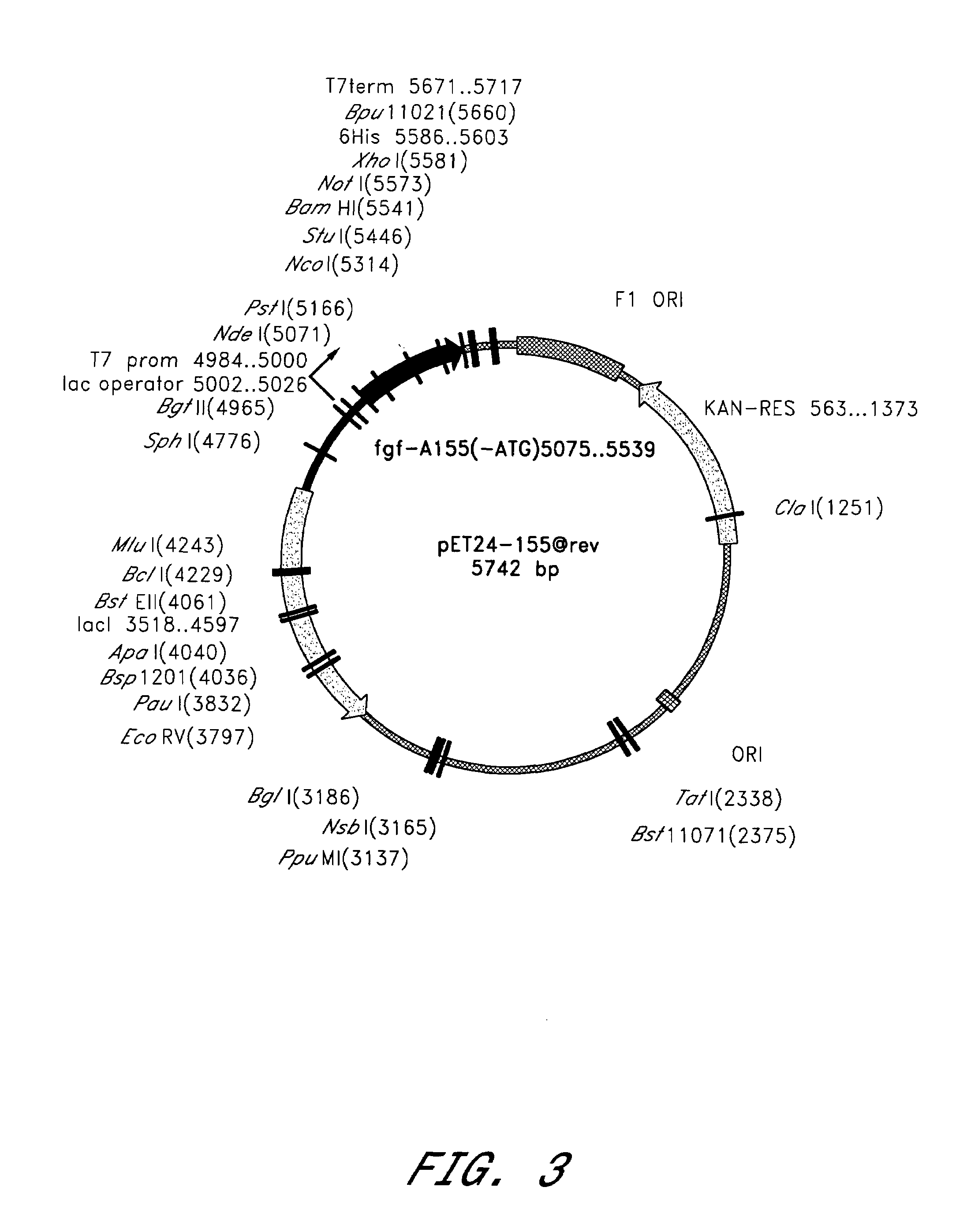Method of producing biologically active human acidic fibroblast growth factor and its use in promoting angiogenesis
a technology of acidic fibroblast growth factor and fibroblast growth factor, which is applied in the direction of peptides, drug compositions, angiogenin, etc., can solve the problems of requiring high-intensity open heart surgery, deprived myocardium of oxygen, and significant disadvantages of alternative methods
- Summary
- Abstract
- Description
- Claims
- Application Information
AI Technical Summary
Problems solved by technology
Method used
Image
Examples
example 1
Production of Human aFGF 154 by Phage-dependent Method
[0119]Cultures of Escherichia coli BL21(DE3) (NOVAGEN) were transformed by plasmid pET24-155 @rev (FIG. 3), which contains one copy of the chemically synthesized haFGF 155 gene encoding human acidic fibroblast growth factor (155 amino acids) (SEQ ID NO: 1). Cultures of BL21(DE3) contain a single copy of the gene for T7 RNA polymerase under the control of the inducible lac UV5 promoter in the bacterial genome (Studier et al. (1986) J. Mol. Biol. 189:113–130). Into the plasmid pET-24a(+) (NOVAGEN) was inserted the chemically synthesized haFGF 155 gene (SEQ ID NO: 1) under the control of the T7 promoter to produce plasmid pET24-155 @rev. Expression of the haFGF 155 gene begins only after the appearance of T7 polymerase in the cells which is mediated through the induction of the lac UV5 promoter by IPTG.
[0120]Cultures of E. coli BL21(DE3) with pET24-155 @rev were grown with shaking at 37° C. in LB medium, containing 50 μg / ml kanamyci...
example 2
Production of Human aFGF 134 Amino Acid form by Phage-dependent Method
[0125]Cultures of Escherichia coli BL21(DE3) (NOVAGEN) were transformed by plasmid pET24-134 @rev (FIG. 5), which contains one copy of the chemically synthesized gene encoding human aFGF 134 amino acid form (FIG. 6; SEQ ID NO: 4). The translated amino acid sequence is shown in SEQ ID NO: 5. Cultures of BL21(DE3) contain a single copy of the gene for T7 RNA polymerase under the control of the inducible lac UV5 promoter in the bacterial genome (Studier et al. (1986) J. Mol. Biol. 189:113–130). Into the plasmid pET-24a(+) (NOVAGEN) was inserted the human aFGF 134 amino acid form gene under the control of the T7 promoter. Expression of the human aFGF 134 amino acid form gene begins only after the appearance of T7 polymerase in the cells which is mediated through the induction of the lac UV5 promoter by IPTG.
[0126]Cultures of E. coli BL21(DE3) with pET24-134 @rev were grown with shaking at 37° C. in LB medium, containi...
example 3
Production of Human aFGF 140 Amino Acid form by Phage-dependent Method
[0129]Cultures of Escherichia coli BL21(DE3) (NOVAGEN) were transformed by plasmid pET24-140 @rev (FIG. 7), which contains one copy of the chemically synthesized gene encoding human aFGF 140 amino acid form (FIG. 8; SEQ ID NO: 6). The corresponding protein is shown as SEQ ID NO: 7. Cultures of BL21(DE3) contain a single copy of the gene for T7 RNA polymerase under the control of the inducible lac UV5 promoter in the bacterial genome (Studier et al. (1986) J. Mol. Biol. 189: 113–130). Into the plasmid pET-24a(+) (NOVAGEN) was inserted the human aFGF 140 amino acid form gene under the control of the T7 promoter. Expression of the human aFGF 140 amino acid form gene begins only after the appearance of T7 polymerase in the cells which is mediated through the induction of the lac UV5 promoter by IPTG.
[0130]Cultures of E. coli BL21(DE3) with pET24-140 @rev were grown with shaking at 37° C. in LB medium, containing 50 μg...
PUM
| Property | Measurement | Unit |
|---|---|---|
| temperature | aaaaa | aaaaa |
| temperature | aaaaa | aaaaa |
| temperature | aaaaa | aaaaa |
Abstract
Description
Claims
Application Information
 Login to View More
Login to View More - R&D
- Intellectual Property
- Life Sciences
- Materials
- Tech Scout
- Unparalleled Data Quality
- Higher Quality Content
- 60% Fewer Hallucinations
Browse by: Latest US Patents, China's latest patents, Technical Efficacy Thesaurus, Application Domain, Technology Topic, Popular Technical Reports.
© 2025 PatSnap. All rights reserved.Legal|Privacy policy|Modern Slavery Act Transparency Statement|Sitemap|About US| Contact US: help@patsnap.com



